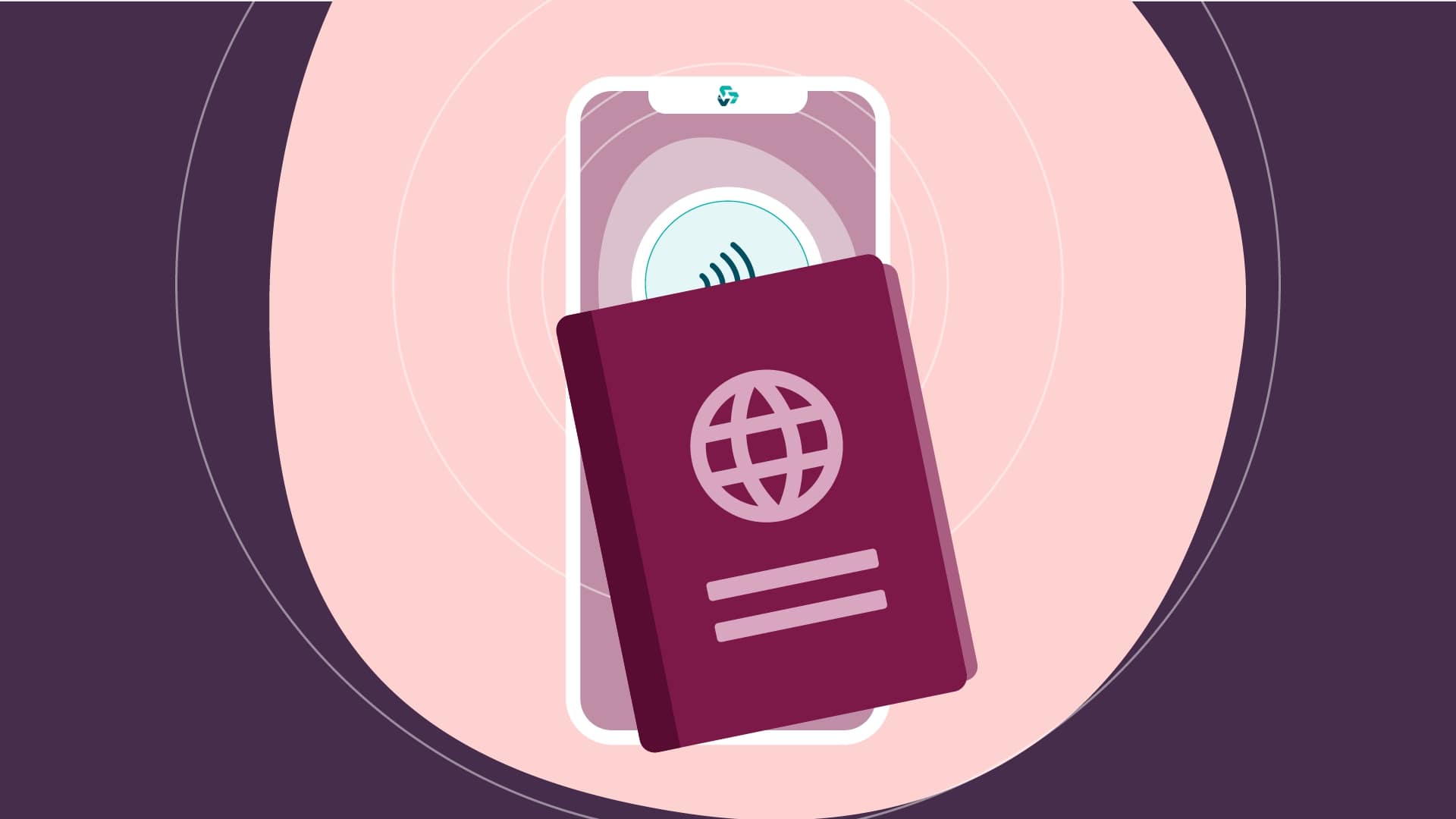Blog Post
What is NFC?
We look at NFC, or Near-field communication – a growing technology in travel, banking, gaming, and importantly for Veriff – identity verification.

Near-field communication (NFC) is a method of wireless data transfer that enables technology that is in close proximity of each other to communicate. This ‘communication’ does not require an internet connection and allows for the rapid transfer of information between devices with a single touch.
NFC is often described as the ‘ultimate in connectivity’ and has the capability of making a user’s devices – like their smartphone, tablet, wearables, payment cards etc – even smarter.
NFC started to take-off in 2004 when Nokia, Philips and Sony came together to form the NFC forum. The NFC forum is a non-profit organization that works to bring NFC technology to everyday life.
The first NFC-enabled phone was launched by Nokia in 2007 and in 2017 New York City’s Metropolitan Transit Authority (MTA) introduced a system to allow users to pay for their subway fares with NFC technology. In recent years, NFC Technology has seen a huge surge in uptake, and it is now used across a myriad of sectors for a wide variety of reasons.
How does NFC work?
The technology involved in near-field communication is relatively simple. Radio-frequency identification (RFID) is the root for NFC, and that has been used for many decades by retailers as a way to tag and track the products in their stores.
An individual NFC chip operates as one part of a wireless link and magnetic field induction is used to activate it when another NFC chip comes into range which results in a peer-to-peer (P2P) network being established. Once activated, small amounts of data can be exchanged between the two devices.
No pairing code is necessary to link up and because it uses chips that run on very low amounts of power, it’s much more power-efficient than other types of wireless communication.
NFC connectivity does seem similar to a Bluetooth/WiFi connections, but the difference is that NFC uses electromagnetic radio fields while Bluetooth and Wi-Fi focus on radio transmissions instead.
Devices using NFC can be either active or passive:
- Passive NFC devices are often small transmitters that don’t need their own power source and are able to send information to other NFC devices but can’t process information sent to them. Interactive signs or adverts are good examples.
- Active NFC devices can both send and receive data. Smartphones are the most common example of an active NFC device.
As with any technology, the security of NFC connections is paramount. NFC usually establishes a secure channel and encrypts sensitive information such as credit card numbers. Users can further bolster their security by having up-to-date antivirus software on their smartphones and ensuring they are password protected.
The common uses of NFC
The applications of near-field communication seem limitless. So, what are some of the common uses of NFC?
- Commuting – No matter what your choice of transport, it seems like NFC is involved in some way. NFC powers the payment cards that are waved over train turnstiles and on buses and can even be used to admit secure entry into your company’s parking garage.
- Advertising – Advertising has become much more interactive recently, and NFC technology within billboards and posters allows you to do things like access coupons or learn about events in your area.
- Payments – Making payments is likely to be the form of NFC technology that most people are familiar with when they wave their smartphone or wearable over a card reader. Apple Pay, Samsung Pay and Android Pay are all examples of NFC payments.
- Socializing – NFC technology crops up in many ways when you are socializing such as when you use your NFC compatible smartphone to attend a concert, transfer money to a friend or share games, info or links by simply ‘bumping’ phones.
- Gaming: Even video games are using NFC technology through little character figurines. These action figures can be waved over consoles to allow players to ‘check-in’, activate unique features, store user data and customize settings.
How is Veriff using NFC?
Although NFC can be used for ‘fun’ unsurprisingly, uses for it are also being increasingly found in the security and identity verification industry.
In 2019, Veriff launched a first-of-its-kind NFC verification tool to help with identity verification. The tool means that ePassport compatible identity documents can be validated through native protocols in both iOS and Android devices.
This technology means that data can be read directly from an ePassport chip and thus provide more robust security against fraud or identity theft. This technology helps to both strengthen a country’s passports and allows authorities to better validate people’s identities.
The future of offline identity documents is looking very digital, and the global demand for ePassports is mounting, with it estimated by Technavio that it will grow by 21 percent CAGR to $23.93 billion in 2023.
In 2006, the United States started issuing ePassports with biometric data, while the deadline for all member states in the European Union to implement biometric chips in their passports passed in 2006 (although many countries failed to meet this deadline).
The trend of ePassports is definitely here to stay and not only does it provide better protection against fraudsters and document tampering, but it can also take online verification to new heights as well. Similar biometric chips are being added to a huge range of identity documents across the globe and NFC technology is intrinsic to their success.














